He Xiangyu
House of Nations
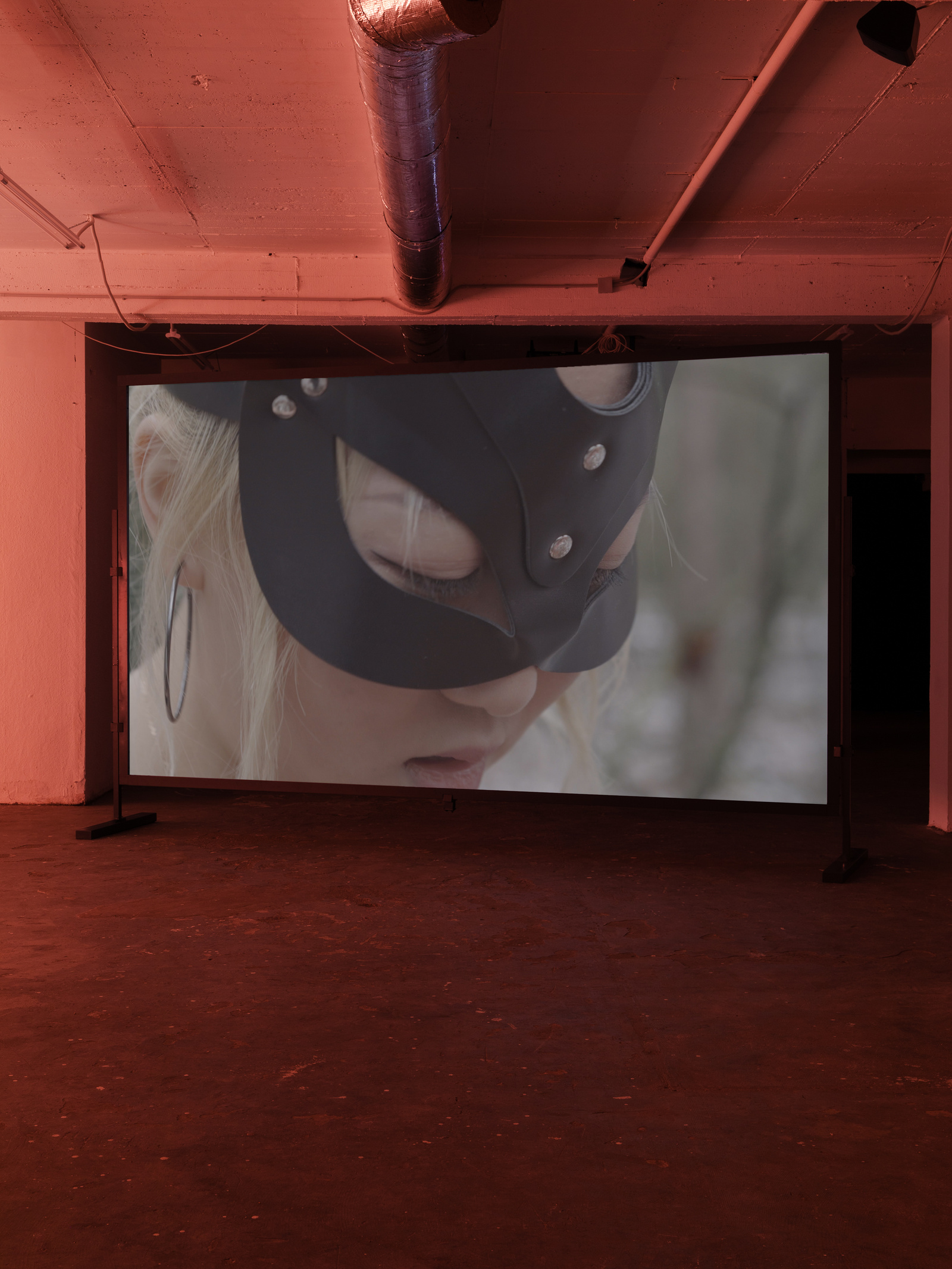
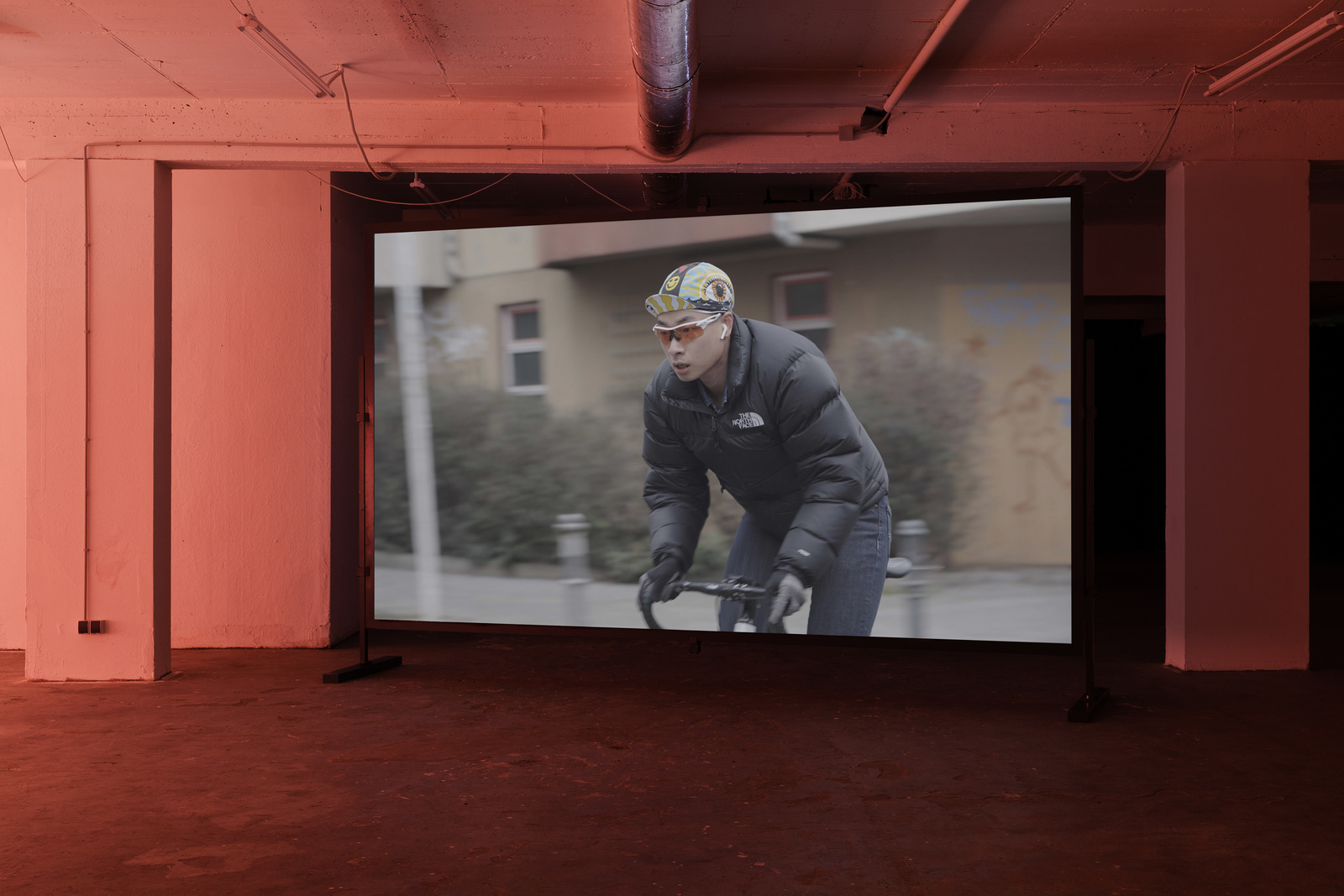
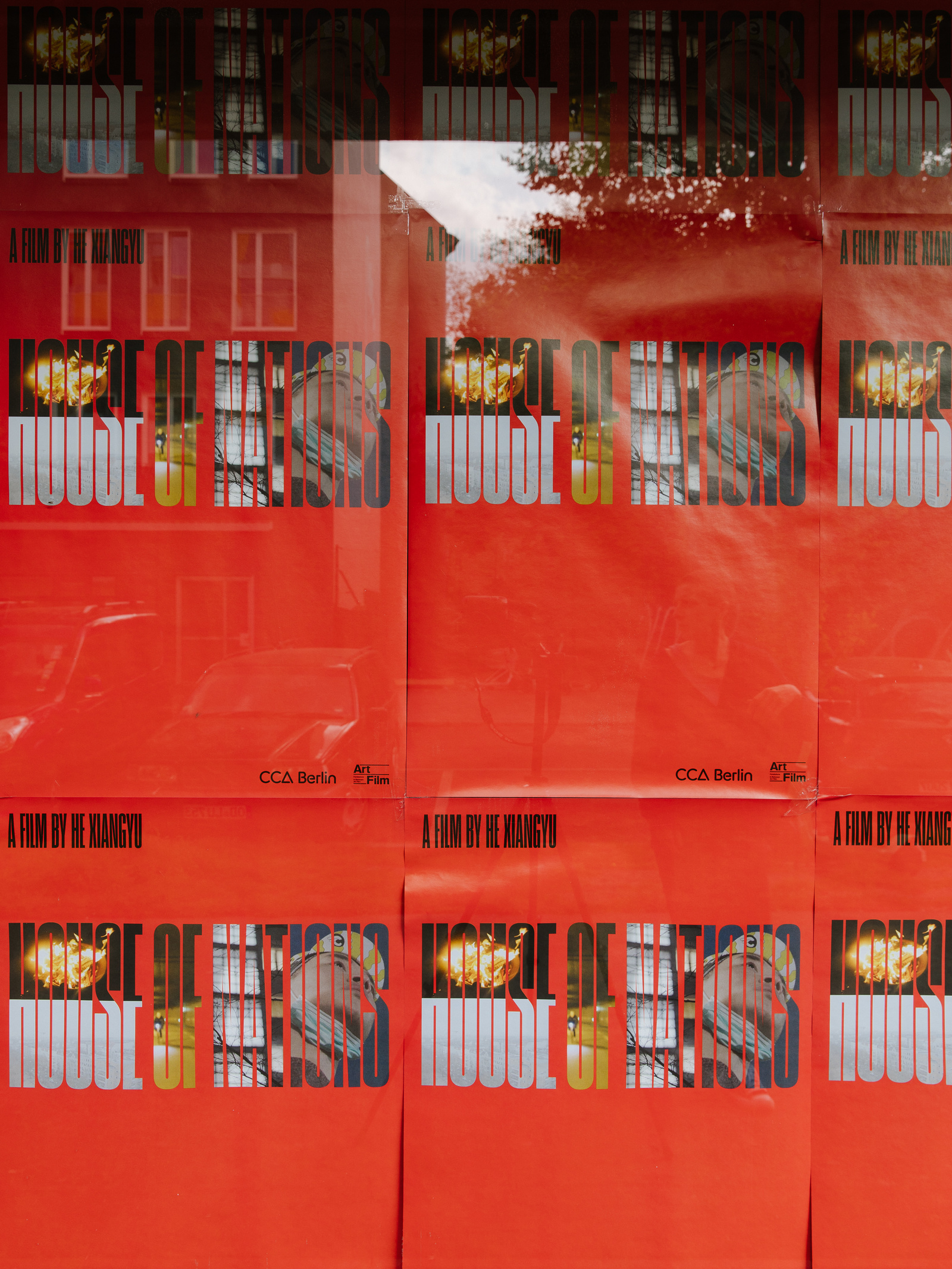
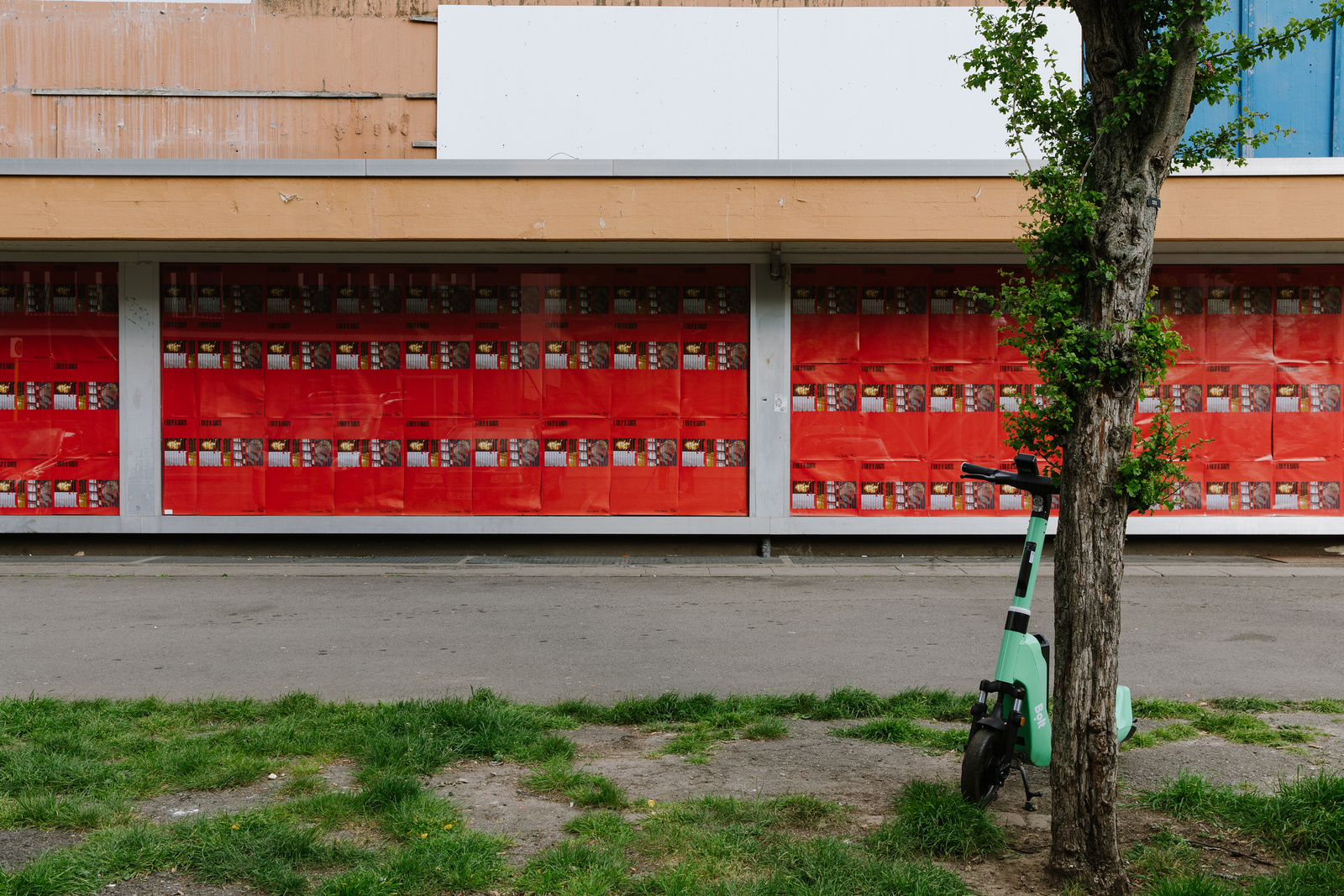
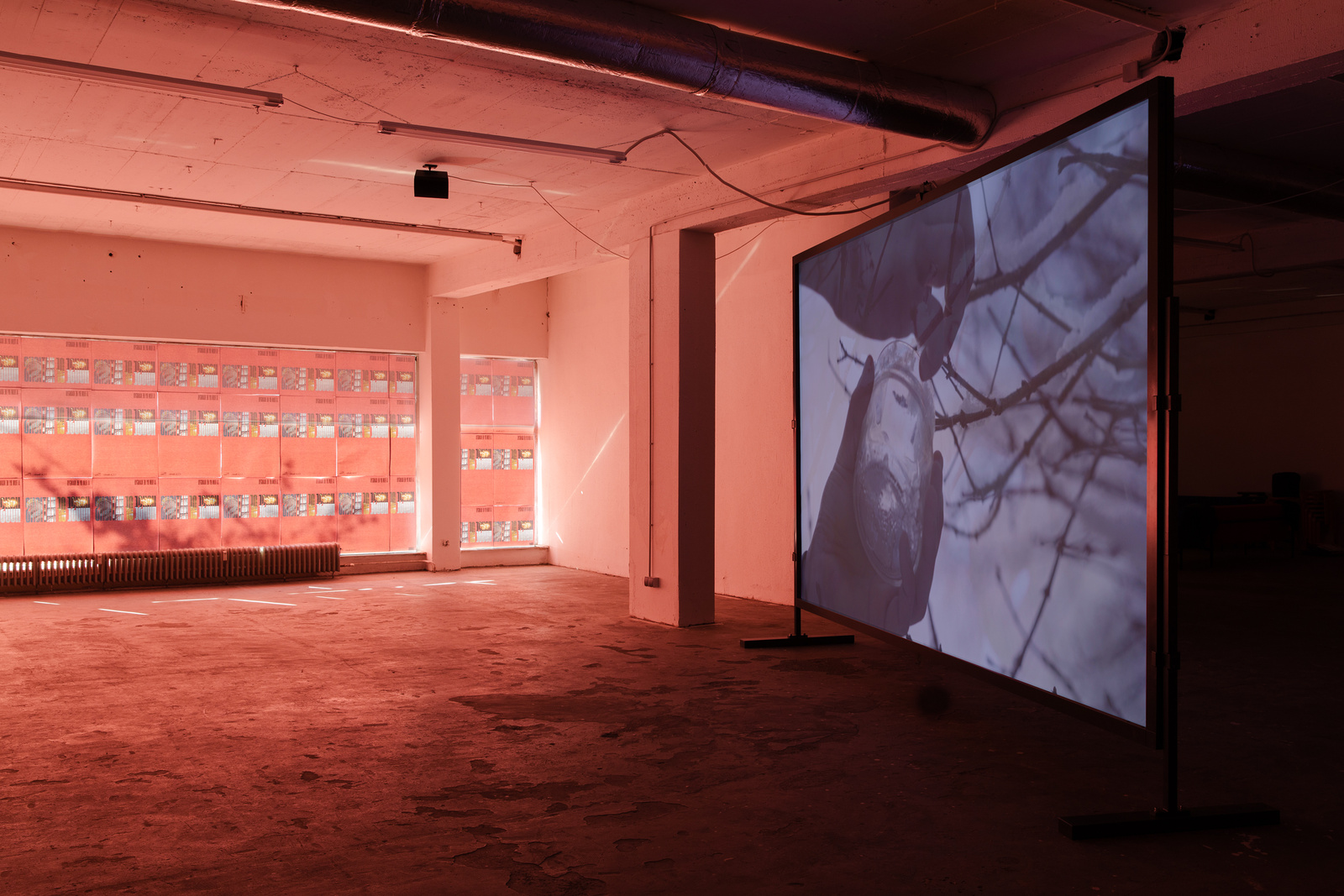
He Xiangyu, House of Nations, Installation views, CCA Berlin, 2022. Photos: Diana Pfammatter
请向下滚动查看中文文本。
House of Nations is a short film by artist He Xiangyu, shot in Berlin in the past couple of years. The film’s protagonist, a Chinese exchange student, is seen biking through the city, gathering with fellow students, and bathing in lakes alone amid the first pandemic-related global lockdown. His seemingly trivial and uneventful daily life is intermittently disrupted by close-ups of a heavy carpet, a flickering bonfire, hands rubbing together, and ambiguous interactions in the snow. At once intimate and voyeuristic, these scenes are carefully woven into a cinematic whole from which a narrative of alienation becomes more and more palpable.
The title of the film is named after the student dormitory in Berlin Wedding where the protagonist resides. The film was commissioned by the Fondazione In Between Art Film with the idea of responding loosely to the theme of translation and its complexities.
House of Nations expands Xiangyu’s exploration into, and visual translation of, non-verbal forms of corporeal expression. Here, the artist is both a documentarian and a companion, as he captures and intervenes in the daily life of his protagonist; the handheld camera shots produce a sensuous tangibility to otherwise invisible affects traversing him. Throughout the film, one encounters many spatial settings: obscure urban spaces; living spaces divided by corridors, incandescent lights and doors that need to be pushed open one after another; and natural spaces toned down by overexposure, though permeated with a sense of lightness, seemingly limitless and relaxing. Such spaces, and the varying illumination conditions they are subjected to, construct a metaphor for an environment that the individual is unable to either navigate or resist.
The film was shot in Europe during the Covid-19 pandemic, a period when the exclusion and racial targeting of Asian communities unfolded in their extreme form. Stereotypically labelled as a “model minority”, Asians were long exhausted by the everyday subjections to systematic discrimination and policing. The protagonist’s experience in Berlin, distinguished by his anxiety over an uncertain future, and his powerlessness to resist isolation and segregation, mirrors that of various migrant communities.
Compared to Xiangyu’s other film and video works, House of Nations is distinctly raw, analog, and spontaneous. But numerous parallels can be made, particularly the exploration of rhythm also observed in his earlier work Terminal 3 (2016–2019). The filmmaker and theorist Trinh T. Minh-ha wrote: “Rhythm marks one’s experience of film, (...) one is above all working with rhythm.” According to Trinh, the relationship between each component of the sound and image is determined non-verbally by rhythm. Rhythm conveys an experience of multiplicity between hearing and seeing, whereby the text is neither ruled by the image, nor is the image mediated by the text. Such experience can therefore shift the otherwise static nature of one’s perception of people and events.
This film can also be seen as a cinematic portrait. The almost speechless “performance” of the protagonist echoes a series of recent sculptures by the artist that resemble private monuments and depict one-to-one representations of his closest friends. The artist’s pursuit of materials in the making of these sculptures reveal an obsession with interiority and invisibility. For example, in his material experiments for Asian Boy (2019-20), a sculpture of a preadolescent boy opening a can of soda, the artist does not foreground his process with a visual referent, but rather through “quietness”, which relates to sound and hearing. The misplaced perception of “seeing sounds, hearing images” in fact breaks down the dichotomy between seeing and hearing, creating the possibility for renewed modes of communication.
Hanwen Zhang
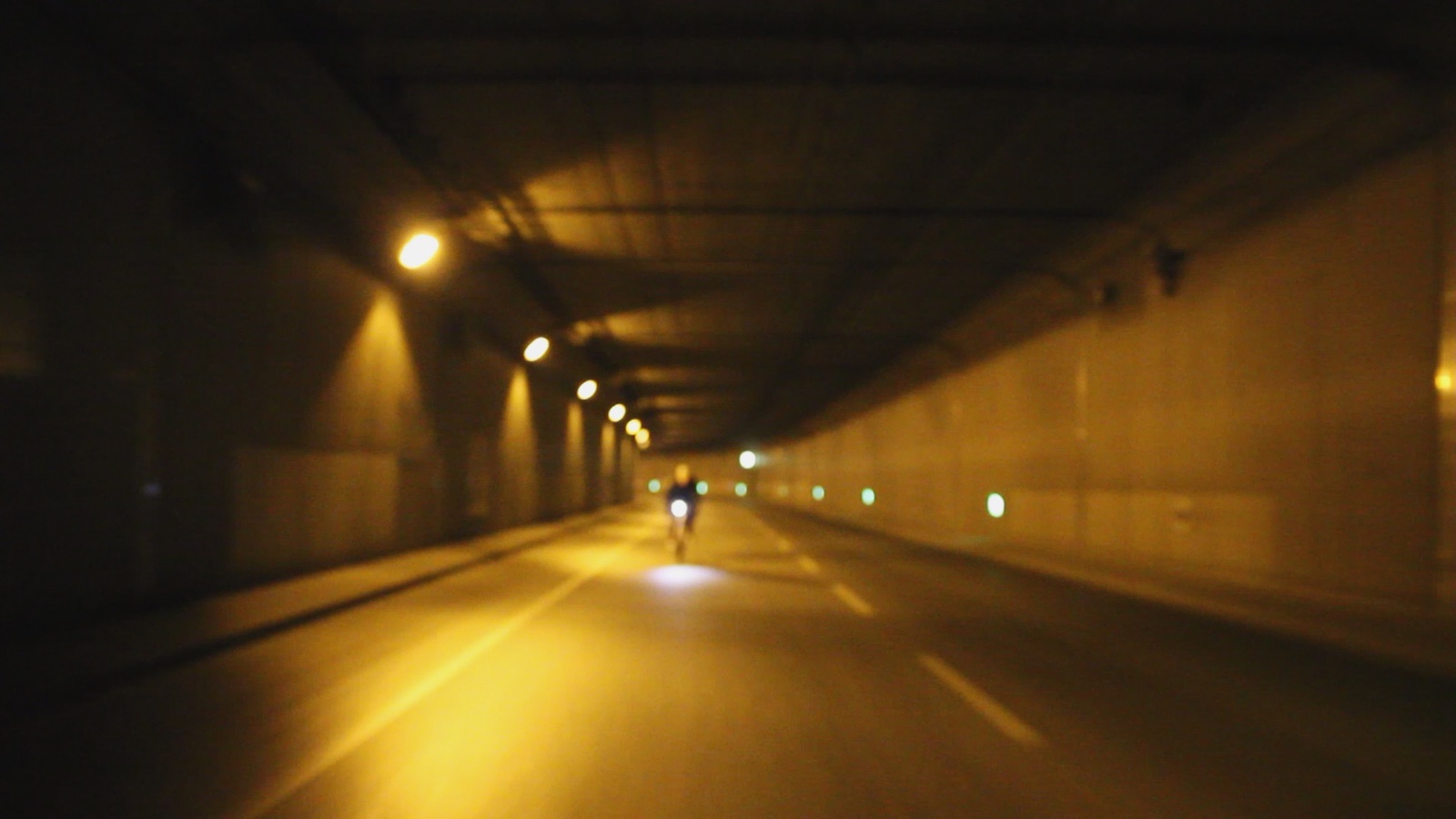
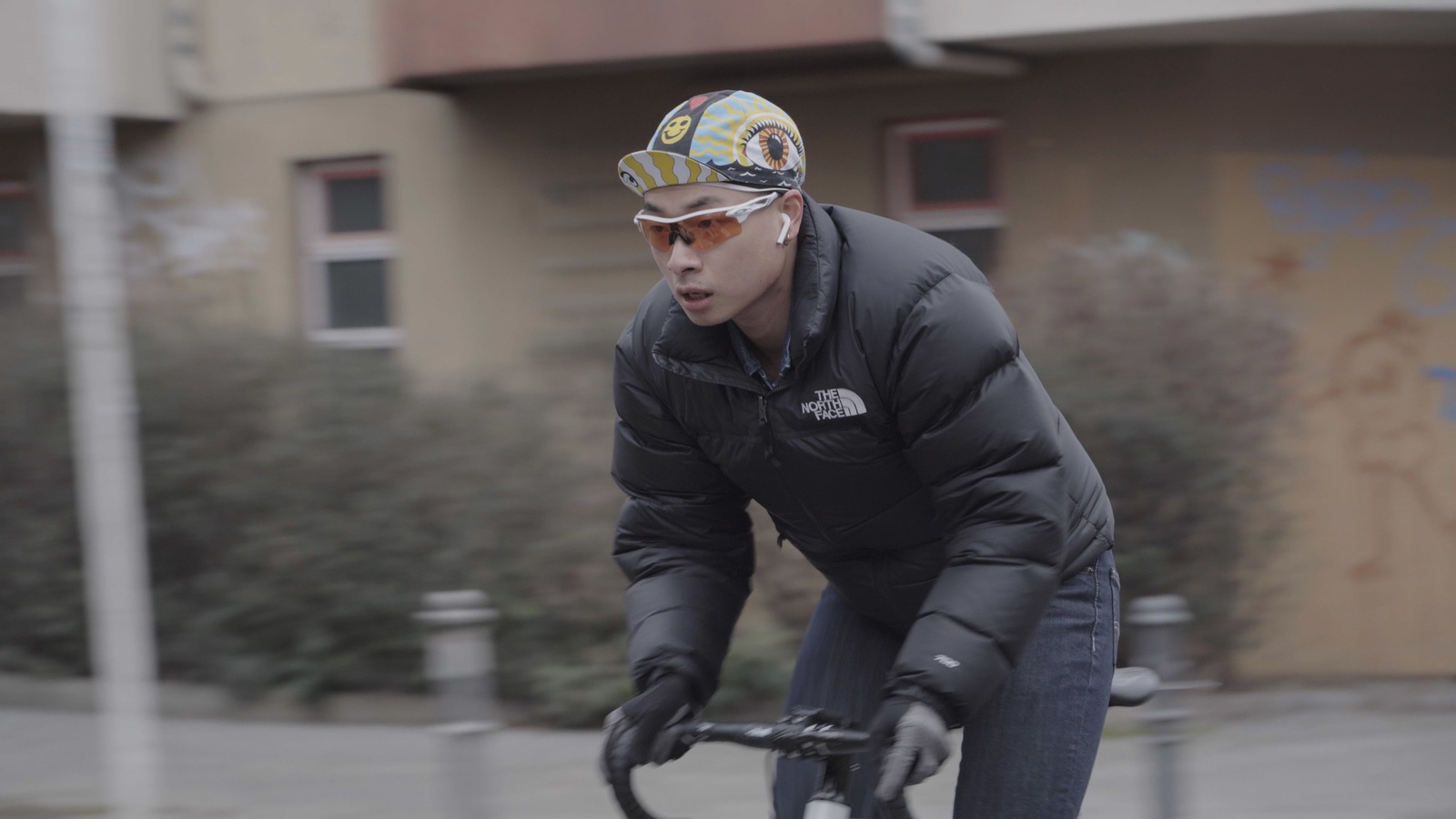


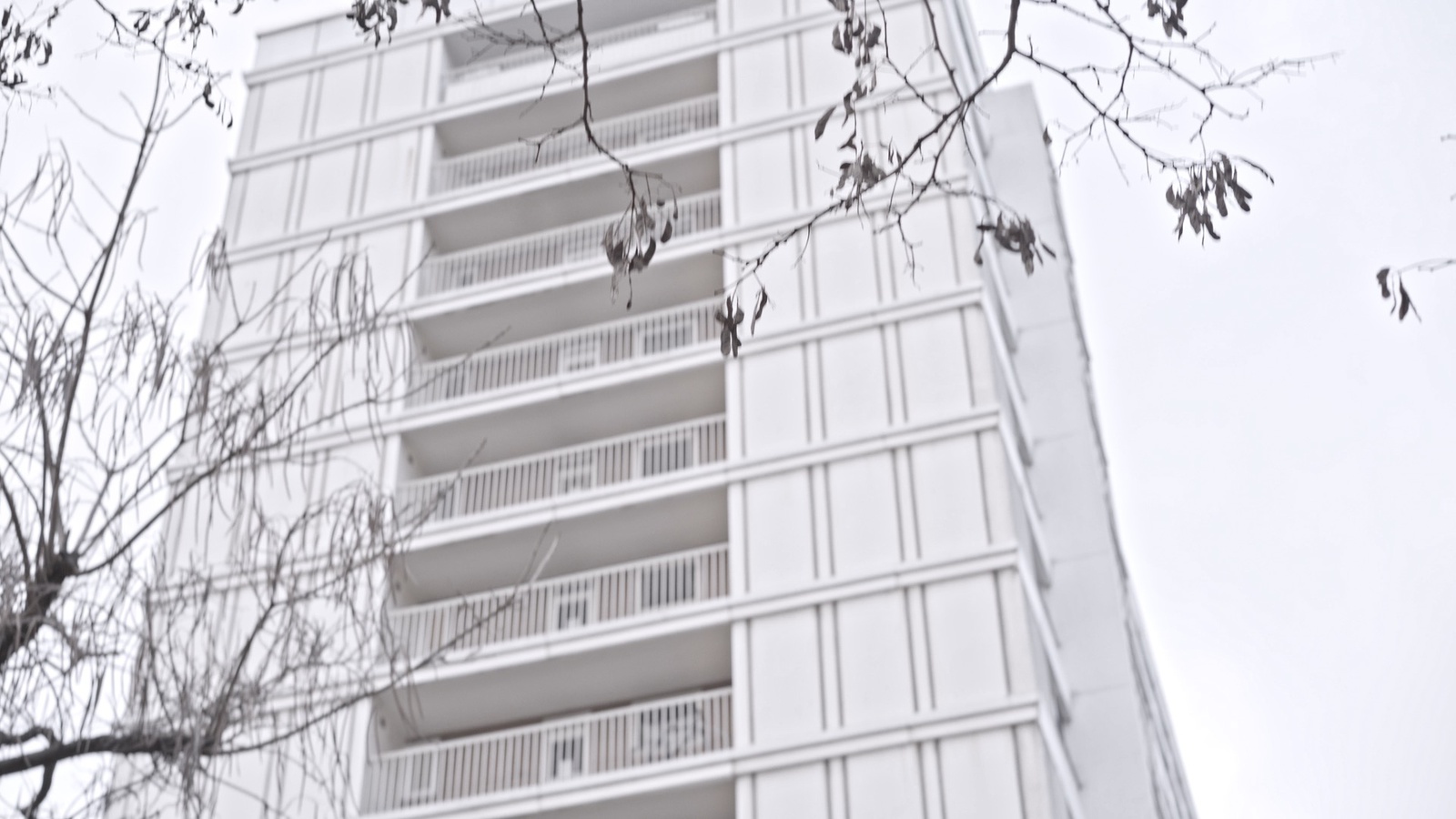
He Xiangyu, House of Nations, Film stills, 2021.
Hanwen Zhang is a researcher and curator based in Berlin. Her research focuses on feminist epistemology, third cinema, critical theory, and cultural politics.
The film House of Nations was made possible by the generous support of Fondazione In Between Art Film and the Gesellschaft für Deutsch-Chinesischen kulturellen Austausch e.V.
CCA Berlin’s 2022 program, organized under the title of Pilot, is envisioned as the institution’s exhibitionary testing ground. It will unfold over the course of its first 12 months through individual presentations of existing works by artists. Pilot aims to highlight and revisit works that are significant to the development of CCA Berlin and thereby draw a curatorial blueprint for the institution’s future collaborations and aesthetic enquiries.
爧萻橯 He Xiangyu
House of Nations
爧萻橯 He Xiangyu
House of Nations
House of Nations 是艺术家何翔宇近年在柏林完成的一部短片。影片以一位中国留学生为主角,记录了他在新冠病毒大流行造成的第一次全球性封锁期间,骑单车在城市穿梭,与同学相聚,还有独自在湖中沐浴等场景。他看似琐屑的,毫无波澜的日常生活被一系列特写镜头贯穿和分割: 沉重的地毯,攒动的篝火,揉搓中的双手还有雪地上充满隐喻的互动。 镜头时而亲密,时而疏离,使编织在整部影片中的异化感变得愈发可触。
片名 House of Nations 取自主角居住的,位于柏林 Wedding 区一个学生公寓的名字。受Fondazione In Between Art Film委任制作,这部影片回应主题“翻译”及其延伸出的讨论。与影片中的所有内容一样,其标题命名本身也正契合了这一主题所蕴含的复杂性。
这部影片延续了艺术家对难以言表的、私密的身体感知的探索和转译。艺术家既作为导演, 也作为一个陪伴者渗入主角生活的日常和他的感知之中。尤其是手持相机拍摄贯穿始终,给予这部新作中无形的压抑和不可触碰的期待几乎物化的质感。众多可能生成故事的碎片在影片中流动穿梭 ── 瞬间闯入的思绪和突然流转的意念 ──再次创造了,也为观者捕捉了稍纵即逝的感受。
贯穿整部影片,“空间”在很多层面上被艺术家提取和运用: 晦暗不明的城市空间; 被走廊,白织灯和门划分的居住空间 ── 让人印象深刻的是那很多扇需要被接连推开的门; 还有以过曝调和的自然景观空间──虽然渗透着空气感,貌似自由舒畅,但是隐隐之间, 似乎无孔不入的无力感张弛着。这些对于明暗和空间的运用恰到好处地构建了一个有关个体既无法探明又无法反抗的大环境的隐喻。
这部作品是在病毒肆虐下的欧洲拍摄的,亚裔群体受到排斥的事实在这一时期以极端的形式暴露了出来。向来被套以“模范少数族裔”的亚裔们早已在日常系统化的歧视和规训下精疲力尽。这部作品则以主角个人的处境和他面对不知所向的未来的压抑,以及疫情下夹杂在孤立和隔离之间的无力抵抗,使其能够与更为广泛的移民群体及其经历产生共鸣, 从而将个人的感知延伸到了群体的层面。
较之何翔宇其他的影像作品,House of Nations 这部作品显得直白又随机。一方面似乎会使人认为,这部作品构成了艺术家创作的一个转向,但同时又能感受出这部作品与他的另一部影片 Terminal 3 (2016-2019)有着相似的对节奏的探索。电影制片人和理论家郑明河曾写道,“节奏标志了一个人对电影的体验,制作影像作品的第一要事即是在节奏上的工作。” 存在于声音和图像及其内部所构成的关联,正是由非语言化的“节奏”来决定。节奏传达了之于听与看之间的一个具有多重性的经验。在这种经验当中,文本既不被图像统治,图像也不被文本所控。这种经验从而可以不断地改变一个人对人和事看法的基础。
这部影片也可以被视为一个电影肖像作品。片中主角几近无言的"表演"似乎与艺术家另一系列犹如私人纪念碑般的雕塑作品呼应着:在这一系列作品中,艺术家等大比例地翻制了身边的密友。在制作这系列雕塑的时候,艺术家对材料的审慎和追求恰恰透漏了他对不可见、不可言喻的,更深层的感觉和共鸣的执着。 正如他对雕塑作品Asian Boy(2019-2020)所作的材料试验。 这件作品描述了一个正在开可乐罐的小男孩,艺术家所追求的并不是确凿的材料的视觉效果,而是“安静” ── 一个对声音和听觉的表述。“看得见的声音,听得见的图像” ── 这样似乎错置了的感知实际上打破了视和听的二分,建立了重新获得感受的过程,也为重新交流创造了可能。
张瀚文
张瀚文是一位驻柏林的研究员和策展人。她的研究重点是女性主义认识论、第三电影、批评理论和文化政治。
电影 House of Nations 是在Fondazione In Between Art Film和德中文化交流协会的慷慨支持下完成的。